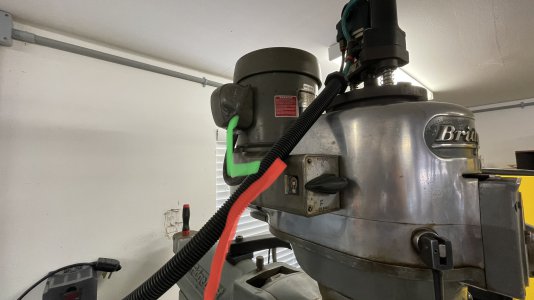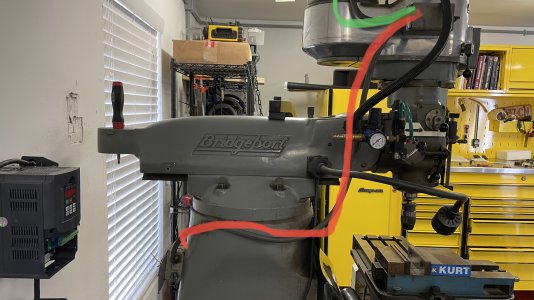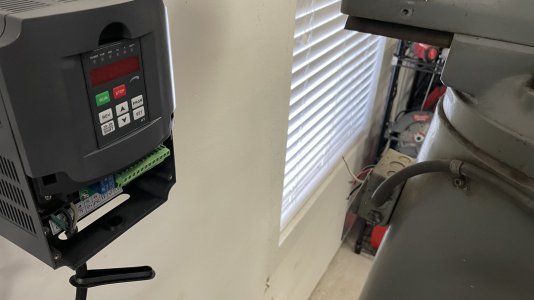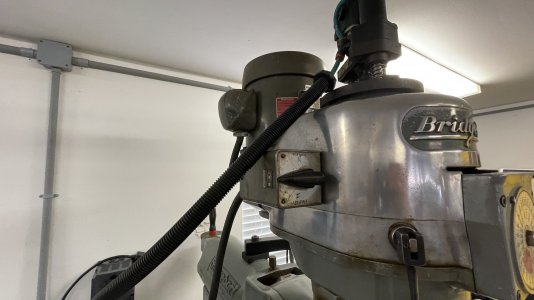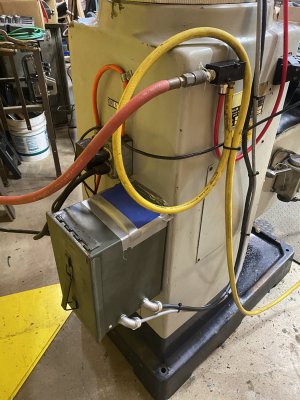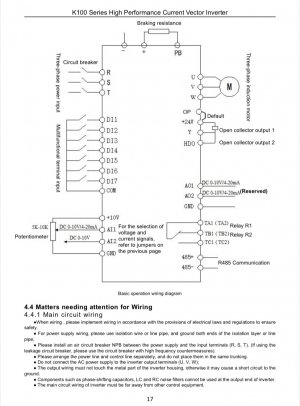- Joined
- Nov 23, 2023
- Messages
- 3
The biggest thing with VFD is to ensure there is NOTHING between the VFD and the motor. No switches, branches, nothing. Suddenly switching the motor out of circuit can destroy a VFD. Just wire the switches to the VFD inputs. Then 3 wires motor-VFD. I also like grounding the body of the machine and motor, it's a safety ground and should carry no current unless there is a fault, and the breaker handles the rest if there is. I used a 4 conductor cable and ran the ground back to the VFD which is tied to the house ground.
The way the machine is currently wired, it takes main into a junction box on the back. That feeds the 3-position Forward-Off-Reverse switch, marked in red.
The switch feeds the motor, marked in green.
If I understand you, I’m to wire the green directly to the VFD, omitting the 3-position switch?
My plan was to wire from the VFD to the junction box, and call it a day. That’ll blow the VFD?
